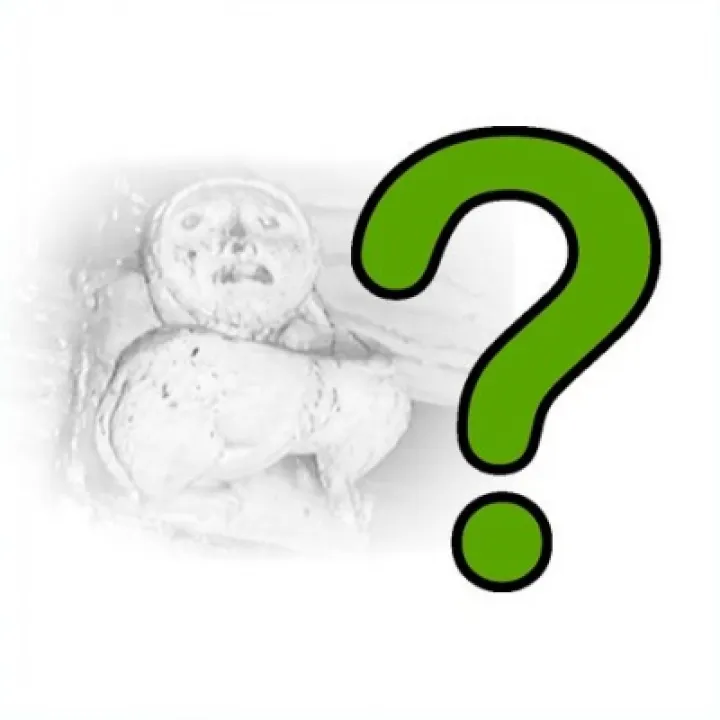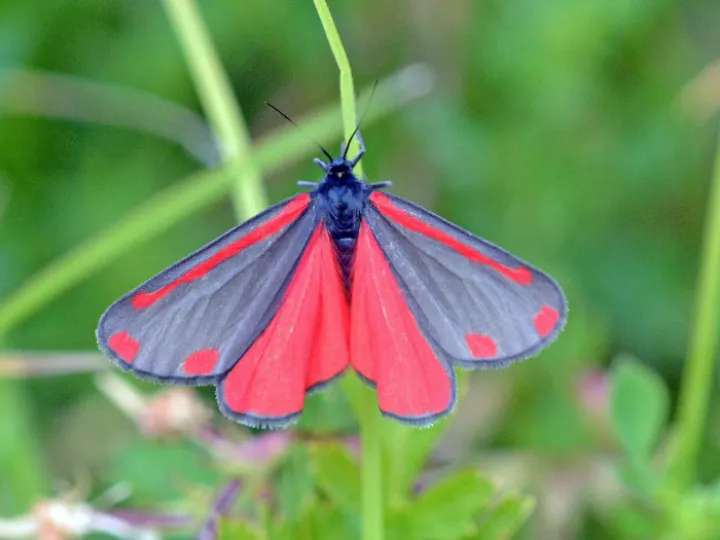Cinnabar Moths in the Woodlands
The smaller "livestock" in the woodland.
WE know there are many birds that visit or live in our woodland. There are also occasional indications of animal life – molehills, produced by moles in order to trap the insects and worms which are their food; eerie noises emitted by love-sick foxes during winter, and so on. However, the woodland is teeming with life of other sorts, notably insects, and the fact that so many of the birds nesting in our birdboxes each year are able to raise several broods of chicks is testimony to the vast number of insect caterpillars that feed and grow on the leaves of our trees.
However, 2024 has not been a very good year for insects. Prolonged periods of wet weather have not only made life miserable for us, but they have undermined the efforts and made things difficult for all of our insect life, which is why we have experienced a significant shortage of bees, butterflies and moths throughout this summer. Insects play an important part in the food web of many living things, and so the whole of nature has been affected.
There is, however, a little bit of good news on the insect front – and it involves one of our wildflowers: one that is usually classed as an injurious weed – Ragwort. You may know and would certainly be able to recognise ragwort flowers. They are tall plants with bright yellow, daisy-like flowers that are invaluable nectar and pollen sources for many insects. Its bad press comes from the fact that the plant contains many poisonous alkaloids, which, if eaten in any quantity, would certainly kill horses or cattle. However, both creatures are able to detect the living plant and will always leave it alone while it is growing. The danger comes if ragwort plants are harvested, along with the grass, and then turned into hay. The animals are no longer able to smell the toxins and so would be in danger were they to eat that hay. Our woodland does have some ragwort growing BUT we have no livestock (other than dogs, which are not herbivorous!) and we never turn any of our plants into hay – thereby removing any danger which might conceivably result from allowing the ragwort to remain.
Ragwort is the principal food plant of the caterpillar of the Cinnabar Moth. The large adult moth flies during the daytime and has a colouration which is blue and bright red – the vivid red being the same colour as the ore of Mercury known as Cinnabar, hence its name. The adults lay their eggs on the ragwort plant, the hatching caterpillars then munch their way through all of the leaves, until the plant is left as a skeletonised stick! The caterpillars then pupate and turn into more adult cinnabar moths.
Earlier this Summer, one of the more observant members of Tarvin Community Woodland Trust noticed cinnabar moth caterpillars on the ragwort in our woodland. These, we believe, were later able to pupate and so will become adult moths next year. In the great scheme of things, this might only be a tiny success, but it is a success, nonetheless. Ours is principally an amenity woodland, run for the benefit of the community. However, we try very hard to encourage nature and instances like this show that we can, to a small extent at least, encourage our woodland to be more of a place which is hospitable to nature.
Quick Links
Get In Touch
TarvinOnline is powered by our active community.
Please send us your news and views.








